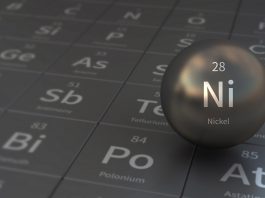Lithium-ion batteries have emerged as an unparalleled force in energy storage, owing to their high energy density. They are now omnipresent in many devices – from small-scale applications such as smartphones and laptops to large-scale uses like electric vehicles and grid storage.
However, this remarkable energy density comes with various challenges, particularly in relation to the thermal stability of high-nickel cathodes.
The issue at hand is complex yet critical. High-nickel cathodes are essential for increasing the energy density of lithium-ion batteries; however, they can also make the battery more prone to overheating and subsequent thermal runaway reactions.
These reactions may lead to catastrophic outcomes, including fires or explosions, engendering significant safety implications for battery operation and use.
Innovation News Network discusses these aspects while exploring potential ways to improve performance and mitigate risks associated with battery use and future developments towards producing safer and more sustainable energy storage systems.
The importance of energy density
The augmentation of energy density in high-nickel cathodes is crucial for enhancing the performance and longevity of lithium-ion batteries and pushing the boundaries of their potential applications. This process involves a meticulous approach towards density optimisation, where industry experts constantly explore new techniques to maximise the amount of energy stored within these cell devices.
By achieving this, it’s possible to significantly improve the battery life and overall energy utilisation, thus making these devices more efficient and reliable.

Material selection is indispensable in influencing the energy density of high-nickel cathodes. The choice of materials directly impacts the chemical reactions within the battery’s cells during the charging and discharging processes. It determines how much electrical charge can be efficiently stored per unit volume or weight (energy density).
Consequently, optimising material selection is central to improving power output and stability under diverse conditions.
Charging strategies also have consequential implications on thermal stability and, hence, on energy density. For instance, controlled charging strategies that prevent overcharging can help mitigate thermal instability issues by minimising heat generation within high-nickel cathode batteries. This improves battery life by maintaining optimal operating temperatures throughout various charge-discharge cycles.
Therefore, through appropriate density optimisation methods, careful material selection, and strategic charging approaches, it is feasible to enhance thermal stability and energy density in lithium-ion batteries with high-nickel cathodes.
The role of high-nickel cathodes in energy storage
Integral to the operational efficiency of energy storage systems, anodes and their counterparts play a pivotal role in determining the capacity and longevity of these appliances. Particularly, cathodes hold a substantial influence over battery lifespan and overall performance.
Cathode compositions vary greatly, with different materials offering varied capacities, efficiencies, and lifespans. Recent technological advancements have allowed for more efficient utilisation of cathode materials in lithium-ion batteries, focusing on high-nickel cathode compositions due to their superior energy density.
Cathode degradation remains one of the most significant challenges in enhancing battery lifespan. Over time, this degradation can reduce capacity and efficiency within these energy storage systems. The primary causes include mechanical stress from charge-discharge cycles, chemical instability leading to material decomposition or transformation, and thermal instability that could cause structural changes or even failure at extreme temperatures. Material innovations are constantly being explored as potential solutions to these issues.
Investigations into novel cathode materials continue as researchers strive for enhanced cathode efficiency and thermal stability. High-nickel cathodes are receiving particular attention due to their increased energy density; however, their susceptibility to thermal instability has been a significant obstacle hindering widespread adoption.
Future research efforts must address this challenge while maximising the inherent advantages of high-nickel cathodes towards achieving optimised performance in lithium-ion batteries.
Dangers of overheating in energy devices
Overheating energy storage devices presents significant risks, potentially leading to diminished performance, structural damage, and even safety hazards such as fires or explosions. Energy storage appliances like lithium-ion batteries require a stable thermal environment to function optimally.
When these devices exceed their thermal thresholds due to overcharging, improper cooling techniques or external heat sources, it can lead to accelerated degradation of the device’s internal components. High temperatures may also instigate chemical reactions within the battery cells that could result in an uncontrollable chain reaction known as thermal runaway.
Heat dissipation is crucial in managing the temperature of energy storage devices and preventing overheating. Effective cooling techniques can help maintain optimal operating temperatures by dissipating excess heat from the device’s core parts. These cooling methods range from passive systems such as heat sinks and radiators to active systems incorporating fans or liquid coolants.
Additionally, implementing temperature sensors within these devices provides real-time monitoring capabilities for detecting any rapid increase in temperature.
Adopting overheating prevention strategies enhances overall device efficiency and significantly reduces potential safety risks associated with excessive heat build-up. Continuous advancements are being made in developing more robust materials that can withstand high-temperature exposures without compromising the battery’s performance or lifespan.
Furthermore, incorporating smart sensor technology contributes substantially towards maintaining a safe operating environment by enabling early detection and intervention into any abnormal rise in temperature levels within these energy storage systems. This proactive approach ensures the longevity and reliability of high-nickel cathodes in lithium-ion batteries amid increasing demands for energy-efficient solutions.
Thermal runaway reactions of high-nickel cathodes explained
Understanding the phenomenon of thermal runaway involves an exploration of the complex chemistry of energy storage systems, wherein excessive heat can trigger a self-sustaining and potentially explosive series of reactions.
At its core, thermal runaway is a kinetic process that occurs when an increase in temperature leads to a further increase in reaction rates, producing even more heat. This results in an exponential growth scenario where the reaction rate and temperature accelerate uncontrollably.

This scenario may arise in lithium-ion batteries with high-nickel cathodes due to overcharging or physical damage.
The inherent risks associated with such events underscore the importance of focusing on runaway prevention and reaction control measures. These measures include:
- Runaway prevention: Implementing safeguards during battery design can help mitigate the occurrence of thermal runaway. These include pressure relief mechanisms and separators that melt or shut down under extreme temperatures, preventing ion flow;
- Reaction control: Material selection is critical here as certain materials are less prone to exothermic reactions than others. For instance, choosing cathode materials with higher thermal stability helps reduce the risk and
- Cooling mechanisms: Efficient cooling mechanisms are essential for regulating battery operating temperatures; they prevent overheating and suppress any potential onset of thermal runaway.
The challenge lies in understanding how these catastrophic failures occur and devising strategies to circumvent them without compromising performance or affordability – two key factors driving consumer adoption.
As research progresses towards making safer high-energy-density batteries, it becomes clear that addressing thermal stability issues requires an integrative approach encompassing every aspect, from material selection to battery design and manufacturing processes.
The goal is to prevent hazardous situations and ensure long-term operational efficiency through optimised cooling mechanisms.
Safety implications of battery failure
The repercussions of battery failure, particularly regarding safety, present a significant concern requiring meticulous attention. Lithium-ion batteries, especially those with high-nickel cathodes, are susceptible to thermal instability that can result in serious incidents such as battery explosions.
These dangerous events can occur due to internal short circuits or overcharging conditions, leading to rapid temperature and pressure increases within the battery cell. This phenomenon, known as thermal runaway, can cause significant property damage and personal injury if not properly managed.
Battery failures often involve releasing hazardous materials, posing additional threats beyond immediate fire risks. For instance, lithium-ion batteries contain flammable electrolytes that can ignite under certain circumstances, generating intense heat and harmful gases.
Furthermore, nickel compounds released during these failures are classified as carcinogenic to humans by the International Agency for Research on Cancer (IARC). Therefore, emergency responses must account for the potential presence of these substances when addressing incidents involving lithium-ion batteries.
Safety measures must be in place at all levels, from design and manufacturing stages to end-user handling and disposal, to mitigate the risks associated with using lithium-ion batteries. Engineers continuously work on improving the thermal stability of high-nickel cathodes. Still, until entirely safe solutions are found, users should be provided with clear instructions for safely operating their devices.
Moreover, emergency responders need training about potential hazards associated with these types of batteries, along with appropriate firefighting methods and protective equipment requirements. It is also essential that proper guidelines are put in place regarding disposal or recycling procedures for used or damaged lithium-ion cells to prevent any risk-related accidents during the post-usage phase.
Improving the performance of energy storage systems
Enhancing the efficiency and endurance of energy storage systems embodies a significant stride in sustainable solutions, with researchers relentlessly reviewing and revising methods to magnify their might. A key element in this quest is battery longevity, as the lifespan of a battery significantly impacts both its economic viability and environmental footprint.
This has led to an increased focus on high-nickel cathodes in lithium-ion batteries due to their thermal stability, directly correlating with improved battery life. Some of their benefits include:
- Battery longevity: High-nickel cathodes have shown promise in enhancing battery lifespan by maintaining stable operating temperatures. This reduces the likelihood of catastrophic failure, thus extending the battery’s operational life;
- Storage efficiency: These cathodes also improve storage efficiency by enabling higher energy densities, leading to more compact energy storage units that can store more significant amounts of power for longer periods;
- Renewable integration: In terms of renewable integration, high-nickel cathodes could enhance grid resilience by facilitating more reliable energy storage solutions that accommodate erratic power production from renewables like wind or solar; and
- Sustainability measures: Lastly, focusing on thermal stability properties aids sustainability measures as it reduces waste generation from frequent replacements and minimises resource depletion by contributing towards extended usage times.
The potential impact these developments could have on our modern world is profound; they offer tangible enhancements to existing infrastructure and provide an exciting avenue for future research into thermal management strategies for batteries. With ongoing exploration into this field, unprecedented potential exists for improving performance metrics across aspects such as capacity retention over multiple cycles and broader temperature ranges while aligning well with global sustainability goals.
The significance of advancements in this domain does not merely concern isolated technical improvements. Still, it contributes towards a comprehensive shift towards better resilience and sustainability within our energy systems.
Mitigating risks in battery use
Mitigating the inherent risks associated with battery usage, particularly about safety and environmental impacts, presents a crucial challenge for researchers and industry professionals. Implementing effective risk evaluation strategies is fundamental to identifying potential hazards that could arise during the operation of lithium-ion batteries. These evaluations should consider all aspects of battery utilisation, from design and manufacturing processes to operational usage guidelines and end-of-life disposal.
A comprehensive approach can help prevent incidents due to thermal instability or other issues related to high-nickel cathodes, thereby improving overall safety while reducing environmental harm.
Proper battery maintenance plays an equally significant role in minimising dangers. Regular monitoring of battery health can detect early signs of deterioration that might compromise thermal stability, particularly those involving high-nickel cathodes.
Furthermore, adhering strictly to usage guidelines ensures that the batteries are operated under optimal conditions, which can substantially lower incidences of failure or damage. Safety protocols also need to be established by industry practitioners for dealing with emergencies such as overheating or leaks promptly and effectively.
Protective measures form another cornerstone in this mitigation strategy. These measures may include designing thermal management systems specifically for high-nickel cathode batteries or incorporating protective circuitry within the battery architecture. Rigorous testing regimes must follow these implementations under varied operating conditions to ensure their effectiveness and reliability.
Through these concerted efforts towards risk mitigation, it is feasible to leverage the benefits of high‐nickel cathodes in lithium‐ion batteries while ensuring their safe use.
Future developments for safer energy storage
Transitioning from the discussion on risk mitigation in battery usage, it is essential to address future developments aiming towards safer and more efficient energy storage. As advancements in technology continue to shape our world, there is an increasing demand for batteries that are not only reliable but also sustainable.

Advanced materials play a vital role in improving the safety features of high-nickel cathodes in lithium-ion batteries. Researchers worldwide are actively investigating novel materials with properties such as high thermal stability and improved ion conductance, which can significantly enhance battery lifespan and charging efficiency. For instance, incorporating ceramic coating or solid electrolytes could alleviate some of the issues associated with conventional liquid electrolyte systems – including leakage, volatility, and susceptibility to thermal runaway reactions.
Additionally, these modifications may allow for higher operating temperatures without compromising performance or safety.
Besides material enhancements, adopting sustainable practices throughout manufacturing can substantially reduce environmental impact. This incorporates recycling used battery components or repurposing them for secondary applications and utilising greener methods during production stages.
Moreover, life cycle assessment (LCA) provides valuable insights into how each stage of a product’s life – from raw material extraction through materials processing, manufacture, distribution use, repair and maintenance – contributes to overall environmental impacts.
Therefore, focusing on advanced materials development coupled with sustainable practices could pave the way for safer energy storage solutions while minimising ecological consequences.










